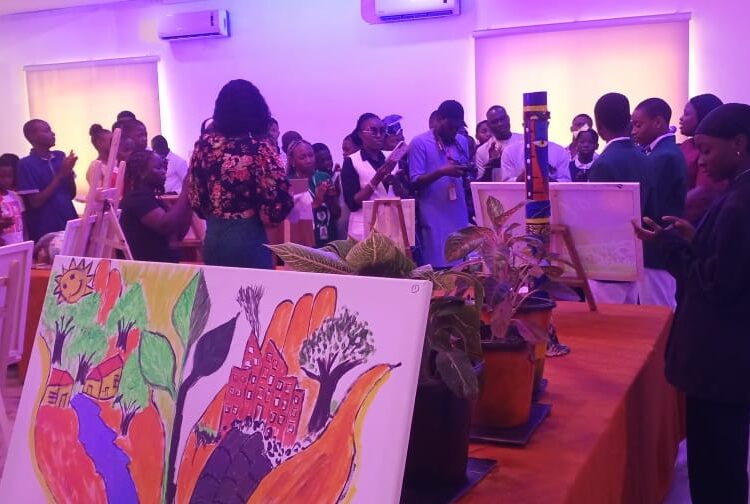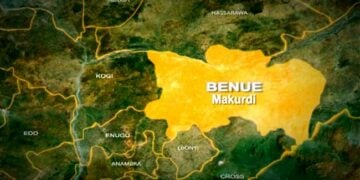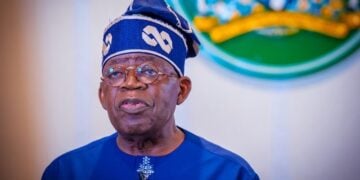In a vibrant display of creativity and urgent concern for the future, children from various schools across the Federal Capital Territory gathered in Abuja for the Eco-Exhibition, part of Save the Children International Nigeria’s Generation Hope Campaign.
This event aimed to amplify children’s voices in the climate change dialogue, especially as Nigeria prepares for COP29.
Amanuel Mamo, Director of Advocacy, Campaign, Communication, and Media at Save the Children International Nigeria, emphasized the importance of providing children with a platform to express themselves.
“When it comes to our environment and how we protect it, children need to have a say because what we adults do today will affect them tomorrow,” he said.
He further explained that the Eco-Exhibition served as a space for children to showcase innovative ideas for reusing and recycling waste materials.
“This aligns with Save the Children’s global campaign, Generation Hope, which aims to enhance climate actions through awareness-raising initiatives and securing political commitments to address the climate crisis,” Mamo added.
Mamo highlighted the enthusiasm of the children participating in the exhibition. “The energy, seriousness, passion, and excitement on their faces are evident. Their message is bold and clear—let’s take care of our environment, keep it green, and save planet Earth.”
Through their art, the children not only raised awareness but also advocated for actionable solutions to tackle the looming threat of climate change.
Mamo stressed the importance of collective action, noting that “the public must recognize that protecting our environment is essential to minimizing the occurrence and effects of climate change. We need a shift in attitudes and behaviors to keep our environment clean and safe.”
He pointed out recent environmental disasters, such as the floods in Maiduguri that affected nearly 400,000 people, underscoring the urgency of climate action.
“The exhibition also highlights the impacts of climate change on children and the innovative solutions they propose. By offering a platform for young voices, Save the Children emphasizes the critical role of including children in climate action and policy discussions. Their insights are essential for shaping more inclusive, child-centric climate policies,” Mamo said.
The organization plans to present the outcomes of the exhibition to relevant stakeholders, showcasing the children’s ideas and creative approaches.
Mamo called on the public and policymakers to enhance children and youth participation in decision-making processes, saying, “It is essential that children’s perspectives are integrated into climate policies, and we all adopt sustainable practices for a better future.”
As COP29 approaches, the Eco-Exhibition serves as a powerful reminder that the future of our planet rests with the next generation, and their urgent call for action must not be overlooked.
Faith Osaretin from the Advocacy Campaign Media Unit at Save the Children noted the event’s significance, stating, “Today, we are in Abuja with children who are communicating about the impact of climate change and the actions they want to see taken.”
The exhibition showcased innovative projects created by the children, each conveying powerful messages about pressing climate issues.
Osaretin explained that the Eco-Exhibition is closely tied to the COP29 simulation, ensuring that the voices of young Nigerians are included in the nation’s climate strategy.
“They designed the activities, implemented them, and are the ones delivering the key messages. These are not just artworks—they carry strong messages,” she said.


The children highlighted pressing concerns, such as plastic pollution and frequent flooding, which disproportionately affect their lives. “They are calling for urgent action to address these challenges,” Osaretin stated.
Among the participants, Okoro Gelasius Izuchukwu from Federal Government Boys College, Garki, showcased artwork that contrasts the world before and after climate change.
“What inspired these paintings was a drawing I made back in school,” he shared.
His illustrations emphasized the importance of greener practices, advocating for the introduction of recycling bins and a commitment to reforestation.
Nazirah Jimoh, a student from Junior Secondary School Jabi 1, reflected on the exhibition’s significance for her and her peers.
“This is a great opportunity for me to showcase my artwork. Climate change is a serious issue, particularly affecting children, especially those with disabilities,” she said.
Her pieces, crafted from recycled materials, testify to the creativity and resourcefulness of young minds addressing serious environmental challenges.
The Eco-Exhibition featured about 45 students from seven schools in the Federal Capital Territory, each contributing their unique perspectives on climate change.











